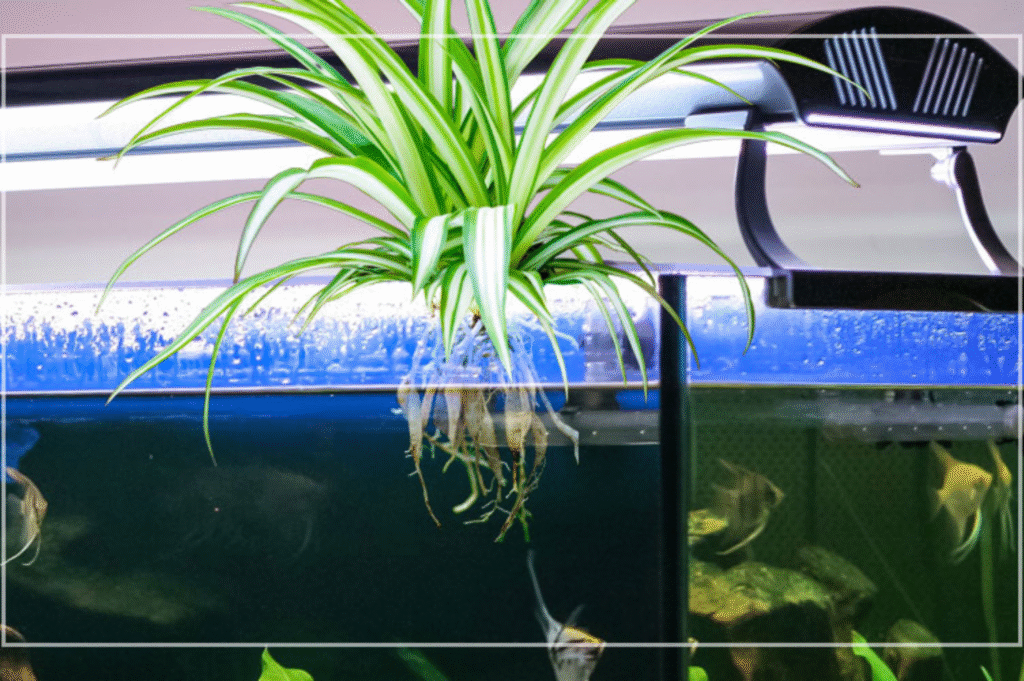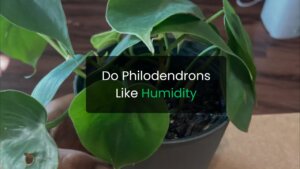Spider plants (Chlorophytum comosum) are well-known for their air-purifying properties, easy care routine, and beautiful green-and-white striped leaves. But for aquarium lovers who keep indoor plants near or inside their tanks, one critical question arises: Are spider plants toxic to fish?
In this detailed article, we’ll break down everything you need to know about spider plants and their effect on aquarium fish. Whether you’re planning to grow spider plants in a paludarium, place them in a hanging pot above the tank, or accidentally dropped one leaf in the water. This guide will answer your concerns.
Are Spider Plants Toxic to Fish?
No, spider plants are not toxic to fish.
They are considered non-toxic and safe around aquariums. However, while the plant itself isn’t harmful, the way you grow or introduce it to water environments matters, and that’s where many people go wrong.
Understanding Spider Plants and Aquatic Environments
Spider plants are terrestrial, meaning they naturally grow in soil, not water. That said, they’re often used in semi-aquatic setups like hydroponic systems or aquaponic filters because of their strong root system and air-purifying qualities.
However, you should note:
- Spider plants are not true aquatic plants.
- They can survive in water for short periods but not thrive in full submersion.
- Long-term underwater growth leads to root rot and plant decay, which can negatively affect water quality and harm fish indirectly.
How Spider Plants Can Be Harmful – But Not Toxic
Let’s make one thing clear: spider plants are not poisonous. But if misused in aquatic environments, they can still cause problems. Here’s how:
1. Rotting Roots Pollute the Water
If a spider plant is fully submerged, its roots will eventually rot due to lack of oxygen. This releases ammonia and nitrates into the tank, which are dangerous for fish.
2. Decay Leads to Oxygen Depletion
As the plant matter decays, it uses up oxygen in the water. Low oxygen levels can suffocate your fish, especially if you have a small tank or a poor filtration system.
3. Mold and Fungal Growth
Rotting roots and stems are breeding grounds for fungi and harmful bacteria, increasing the risk of infections for sensitive fish species.
Safe Ways to Use Spider Plants Near Fish Tanks
If you love the look of spider plants near your aquarium, you can still enjoy them safely. Here’s how to do it the right way:
1. Use a Hydroponic Setup
Spider plants do well in hydroponic systems. Place the roots in a mesh pot or holder above the tank where only the roots touch the water, not the entire plant. This avoids rot while still letting the plant absorb nitrates and help purify the water.
2. Place Them in a Hanging Pot
Keep spider plants in a hanging pot above or beside your tank. That way, you get the aesthetic benefit without any risk to your aquatic pets.
3. Add to a Paludarium
If you’re building a paludarium (a mix of terrestrial and aquatic life), spider plants are a great addition. Keep their roots in damp substrate above water level, and they’ll thrive while adding greenery to your setup.
Can Spider Plants Be Used in Aquaponics?
Yes, spider plants are often used in aquaponics (a system that combines fish farming and plant growth). Since they absorb nitrates from fish waste, they help clean the water naturally. Just remember:
- Keep only the roots in water.
- Use a grow bed or net pot to hold the plant in place.
- Make sure the leaves and crown stay dry.
When done correctly, this setup benefits both your fish and your plant, a perfect symbiosis.
Fish-Safe Plants You Can Grow in Water
If you’re specifically looking for plants that can live fully submerged with fish, here are a few true aquatic options:
| Plant Name | Type | Fish Tank Friendly? |
| Java Fern | Fully aquatic | Yes |
| Anubias | Fully aquatic | Yes |
| Hornwort | Floating/Rooted | Yes |
| Amazon Sword | Fully aquatic | Yes |
| Duckweed | Floating plant | Yes (can multiply fast) |
Use these instead of spider plants if you want a long-term underwater option.
Common Myths About Spider Plants and Fish
Let’s bust a few myths floating around online:
Myth 1: Spider plants purify aquarium water when submerged
Truth: They help in hydroponics, but fully submerged spider plants rot and pollute the tank.
Myth 2: Fish can eat spider plants
Truth: While non-toxic, spider plants aren’t ideal for fish to nibble on. They’re too tough and offer no real nutrition for aquatic animals.
Myth 3: You can grow spider plants like pothos in tanks
Truth: Pothos can survive better in water. Spider plants are less tolerant and need more care if partially submerged.
Final Verdict: Are Spider Plants Safe Around Fish?
Yes, spider plants are safe but not suited for underwater growth.
- Non-toxic to fish
- Not suitable for full submersion
- Safe in hydroponic or paludarium setups
- Can harm fish indirectly if they rot in the tank
If you want to add greenery to your aquarium area without risking your fish’s health, spider plants are a great choice as long as you use them correctly.
Expert Tip: Monitor Water Parameters
Whether you use spider plants in hydroponics or as decoration near your tank, always test your aquarium water regularly. Keep an eye on:
- Ammonia
- Nitrites
- Nitrates
- pH levels
A sudden spike can signal plant decay or poor filtration.
Conclusion
Spider plants are beautiful and versatile, and most importantly, they are not toxic to fish. But if you’re planning to integrate them into your aquarium setup, make sure you don’t fully submerge them. Use hydroponic methods or place them near your tank to enjoy the best of both worlds: healthy fish and vibrant greenery.





